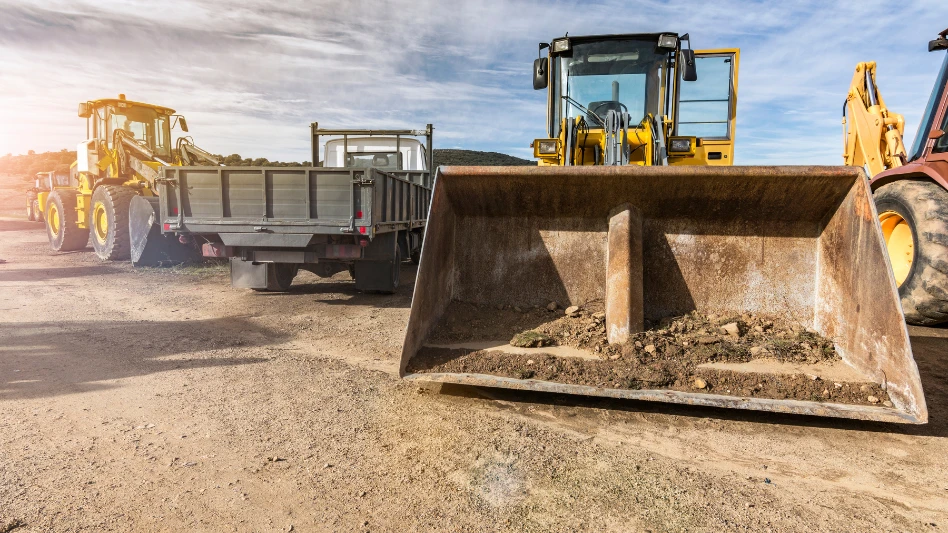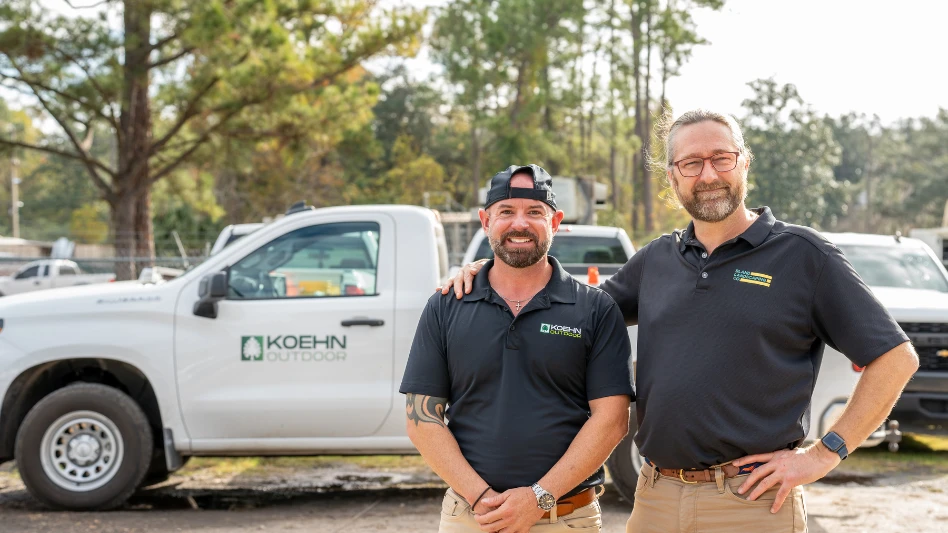 If landscape contractors can make their heavy duty trucks more productive, they'll increase their fleet's efficiency and ultimately save money.Maximizing fleet productivity starts with getting the most out of your vehicles. To a large degree, the best approach is driven by the type of fleet you operate and its drive cycles. In many cases, you may find that different techniques are required for individual groups of trucks within your fleet.
If landscape contractors can make their heavy duty trucks more productive, they'll increase their fleet's efficiency and ultimately save money.Maximizing fleet productivity starts with getting the most out of your vehicles. To a large degree, the best approach is driven by the type of fleet you operate and its drive cycles. In many cases, you may find that different techniques are required for individual groups of trucks within your fleet.
Right-Sizing Your Vehicles
Making sure that you are using the right size vehicle for each application is a good starting point for optimizing vehicle productivity. If your trucks are fully loaded at the start of the day, but have to come back for a second load before the end of the shift, you may want to consider using larger trucks. This could save time and reduce total vehicle mileage.
On the other hand, if your trucks start with a partial load and do not need to return during the day, consider using smaller, more fuel-efficient vehicles.
If you are experiencing excessive down time and on-the-road breakdowns, your trucks may be overloaded or improperly designed for the application. This not only destroys your fleet’s productivity, it is also dangerous and expensive.
Route Optimization
In many cases, routes evolve over a period of time and may not be efficient. Take advantage of computer-based map programs to review various route options. If you are technology-savvy, consider using computer-based modeling programs to model your vehicle’s routes. Remember to consider combining existing routes by using larger or more efficient trucks.
Truck Body and Equipment Designs
Before you buy another truck, make a detailed review of your current and projected work truck requirements, and then determine if there are newer products available that could improve your trucks’ productivity
If you are not currently using specialized bodies or equipment, see what’s available. A combination of increasing labor costs and the availability of new components may make it worthwhile to upgrade to more specialized truck bodies and equipment.
Reduce Fuel Consumption
When it comes to work trucks, productivity can be measured in the number of gallons of fuel burned per task. The Department of Energy has estimated that the typical Class 6/7 work truck has an equivalent fuel economy of around 6 miles per gallon. In many cases, a significant portion of that fuel is burned in non-productive operation (idling) or while operating engine-driven auxiliary equipment (PTO operation).
Anything you can do to reduce this type of engine operation will have a direct impact on your fleet’s productivity. In addition, many cities, counties and even states have implemented idling restrictions for commercial vehicles. Expect even more areas to adopt these restrictions in the future.
- Idle Reduction Technology – Many newer trucks can be programmed to automatically shut down the engine after a specified period of idling. Aftermarket systems are also available, as well as systems that will automatically start an engine during PTO operations when there is a demand for power, and then shut it down after a specified period of no demand.
- Alternative Auxiliary Power Sources – The need for auxiliary power at a job site does not necessarily mean that you have to operate your truck’s engine for extended periods of time. Many soft hybrid technologies provide auxiliary power on demand. These include electric PTOs (E-PTOs), battery-powered static inverters to provide commercial-quality AC electric power (120- and 240-volt) and auxiliary engine-driven systems.
- Cab Hotel Loads – Electric-powered (battery) systems are also available to support cab heating and cooling for shorter periods of time. Fuel-fired systems maintain not only cab heat, but also keep the engine water jacket warm and even pre-warm hydraulic fluids. These systems are very effective in cold climates and can maintain acceptable temperatures for extended periods of time while consuming a small fraction of the fuel that would be burned by operating the truck’s engine.
Beyond the Truck
Looking beyond the truck itself, anything you can do to make your drivers more productive will help them accomplish more work in the same period of time. In certain operating and drive cycles, the use of telematics (including GPS systems) can significantly increase productivity. At the same time, some systems will allow you to monitor vehicle operation and identify potential problems before they result in on-the-road failures.
 Electronic data collection and management systems allow for almost instantaneous collection and tracking of data.
Electronic data collection and management systems allow for almost instantaneous collection and tracking of data.
All of these systems have been mainstream technologies for companies such as FedEx and UPS for a number of years. These technologies have proven effective and their cost has lowered, making them affordable to almost any company that could benefit from their use.
Green Your Fleet
There is no denying the fact that green is in. Many fleets have incorporated some type of mandate or purchasing philosophy to increase the green elements within their operations. Many of the same steps that improve fleet productivity also can contribute to greening your fleet. Using smaller vehicles, improving fuel usage, reducing idle time and using lighter-weight equipment all contribute to reducing fuel consumption and greenhouse gas emissions.
As you continue to make your trucks more productive, you’ll increase your fleet efficiency and save money.
The author is director of fleet relations for the National Truck Equipment Association.

Explore the December 2009 Issue
Check out more from this issue and find your next story to read.
Latest from Lawn & Landscape
- Analysis of an entrepreneur
- Terra Nova's Sedum Conga Line variety wins Best of 2024 Perennial award
- Different ways to distribute
- Case's 580EV electric backhoe loader wins Good Design Award
- Davey Tree promotes Dan Herms to VP, GM of Davey Institute
- Caterpillar's Cheryl H. Johnson set for April retirement
- Registration open for sixth annual Lawn & Landscape Technology Conference
- 12 interview questions to help you hire winners





